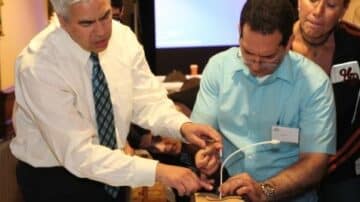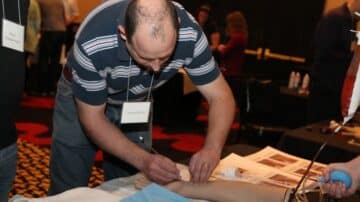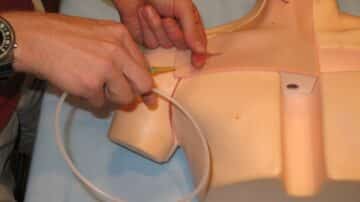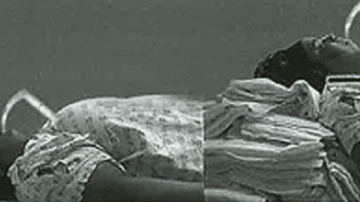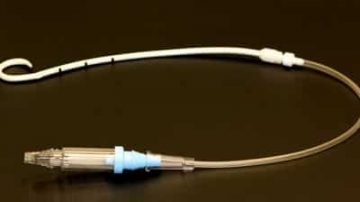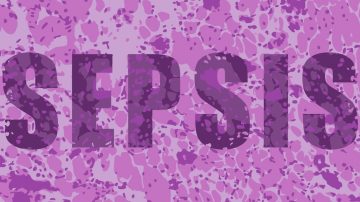Traditionally, traumatic hemothorax treatment called for the insertion of a 36-French (36F) to 40F large-bore chest tube (CT). In this article, we’ll delve into a study that shows how 14F percutaneous catheters (P-CATs or PCs) or pigtail catheters have equal…
Read MoreWhile vasopressors are typically administered through a central venous catheter (CVC), peripheral intravenous (PIV) administration is becoming more common in clinical practice. The safety of this administration method is now well-established and is a good alternative to CVC placement for…
Read MoreBrachial arterial catheterization is widely chosen for constant blood pressure and hemodynamic monitoring in critically ill patients. It provides real-time measurements of physiologic parameters with a very low incidence of associated risks or complications. In this article, we will revisit…
Read MoreCentral line insertion can be a complicated process that requires proper training to minimize procedural risks. One of its most important aspects is the proper positioning of the patient during the procedure to ensure safety and success. Patients may also…
Read MoreMore Articles – Cardiovascular diseases, Chest Tube, Emergency Procedures, Events, Featured, King Tube, Medical General, medical procedures
Thoracostomy or the insertion of chest tubes (CTs) is a frequent procedure in clinical practices. After inserting chest tubes in the patient’s pleural cavity, they become a route for administering antibiotics, sclerosing agents, fibrinolytics, and saline. Meanwhile, indwelling pleural catheters…
Read MoreFor procedures involving lumbar punctures , sonographically guided lumbar punctures (SGLPs) have a higher propensity of being chosen when dealing with obese patients. This is based on findings of a randomized controlled trial conducted in 2007. The main takeaway from…
Read MoreWhat is conscious sedation? Conscious sedation, also known as procedural sedation, is a common practice in emergency departments for patients undergoing painful or anxiety-provoking procedures. It is intended as a less invasive method. Generally, those who undergo this type of…
Read MoreMore Articles – Arterial line, Cardiovascular diseases, Central line, Chest Tube, Emergency Procedures, Endotracheal Intubation, Events, FAST Exam, Intraosseous line, King Tube, Laryngeal Mask Airway, Lumbar Puncture, Mechanical Ventilation, Medical General, medical procedures, Needle Decompression, Paracentesis, Procedural Sedation, RUSH Exam, Thoracentesis, Ultrasound-Guided Peripheral IV
Physicians, physician associates (PAs), and nurse practitioners (NPs) need to be adept in a range of essential medical emergency procedures that they must perform in an inpatient settings. These bedside procedures are accomplished readily, but only if you have the…
Read MoreA Continuing Medical Education (CME) Course is designed for doctors, nurses, nurse practitioners, physician associates and other healthcare professionals who want to learn more about certain topics in medicine. The primary goal of CME is to improve the quality of…
Read MoreThe emergency room (ER) is an essential area of any hospital because it often deals with life-and-death situations. How medical personnel respond significantly affects the prognosis of patients who are in need of urgent care. As a medical professional, experience…
Read MoreMore Articles – Cardiovascular diseases, Emergency Procedures, medical procedures, Respiratory diseases, Thoracentesis
Thoracentesis is one of the most common bedside procedures performed in U.S. hospitals. There are about 173,000 thoracenteses performed each year in the U.S. A systematic review and meta-analysis in 2010 concluded that thoracentesis-related pneumothorax occurs 6% of the time…
Read MoreMorbidly obese patients can pose numerous challenges when it comes to airway management. Morbid obesity can make vascular access more difficult and you need good vascular access prior to any attempts at safe airway management. In addition, morbid obesity can…
Read MoreFor decades the mantra for procedural education in medicine has been “see one-do one-teach one”. Those of us who learned bedside procedures and point-of-care ultrasound by this model understand that this approach does not optimize safe and competent performance. At…
Read MoreA patient with a hemodynamically stable spontaneous pneumothorax can be managed as an outpatient using the placement of a small-bore pigtail catheter attached to a Heimlich valve. As the Director of Medicine at a teaching hospital, I frequently encounter…
Read MoreMore Tags – antibiotic stewardship, antibiotics, Arterial Line, central line, featured, sepsis, sepsis management, septic shock
Timely administration of broad-spectrum antibiotics in septic patients saves lives. Though this has been demonstrated in hundreds of clinical investigations over the last few decades, antibiotics remain the most controversial topic in the management of severe sepsis and septic shock. …
Read MoreCategories
- ACLS (1)
- Arterial line (33)
- Cardiovascular diseases (77)
- Central line (55)
- Chest Tube (39)
- Dermatology (4)
- Emergency Procedures (139)
- Endocrinology (6)
- Endotracheal Intubation (36)
- Events (24)
- FAST Exam (12)
- Featured (113)
- Featured Procedure (42)
- Gastrointestinal diseases (32)
- Ginecology (3)
- Glidescope Intubation (21)
- Hematology (33)
- Hospital Procedures (85)
- Infections (32)
- Intraosseous line (8)
- King Tube (27)
- Laryngeal Mask Airway (18)
- Lumbar Puncture (36)
- Mechanical Ventilation (34)
- Medical General (95)
- medical procedures (258)
- Needle Decompression (6)
- Nephrology (11)
- Neurological diseases (12)
- Oncology (4)
- Paracentesis (32)
- Pericardiocentesis (3)
- Procedural Sedation (19)
- Respiratory diseases (85)
- RUSH Exam (8)
- Thoracentesis (37)
- Traumatology (24)
- Travel (27)
- Ultrasound-Guided Peripheral IV (13)

